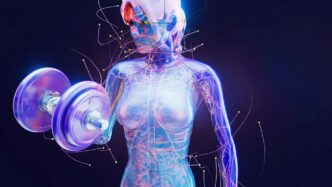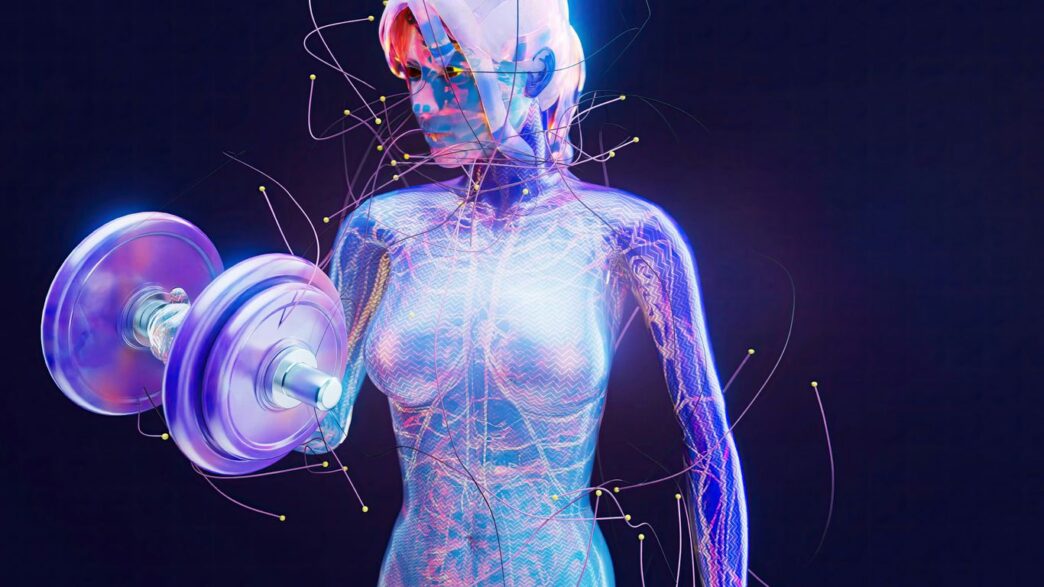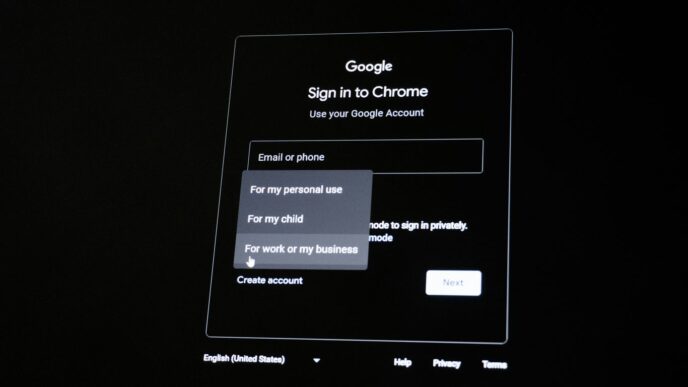Artificial intelligence medical devices are changing how we think about health. It’s not just science fiction anymore; these tools are showing up in hospitals and clinics, helping doctors and researchers in new ways. We’re talking about machines that can learn, understand language, and even help figure out the best way to treat someone. This technology has a lot of promise, but it also brings up some important questions we need to think about.
Key Takeaways
- AI medical devices use machine learning, deep learning, and natural language processing to help with tasks like analyzing images and understanding patient notes.
- These devices work best when connected with other tech, like the Internet of Medical Things and genetic data analysis, to offer more personalized care.
- AI is speeding up the process of finding new drugs and making clinical trials run smoother, and it’s even starting to help with mental health support.
- We need to be careful about the ethical side of AI in healthcare, including fairness, patient privacy, and making sure the technology is used responsibly.
- Future AI medical devices will likely use new methods like federated learning to protect privacy and become more understandable to users.
Understanding Artificial Intelligence Medical Device Technologies
Artificial intelligence (AI) in medical devices isn’t just one thing; it’s a collection of smart tools that help doctors and patients. Think of it as a set of advanced assistants, each with its own specialty. These technologies are changing how we diagnose, treat, and manage health.
Machine Learning and Deep Learning Applications
Machine learning (ML) is like teaching a computer by showing it lots of examples. Instead of giving it exact rules for every situation, you feed it data, and it learns to spot patterns. Deep learning is a more advanced type of ML that uses layered networks, kind of like a simplified brain, to find really complex patterns. This is super useful for things like medical images.
- Image Analysis: Deep learning models, especially ones called Convolutional Neural Networks (CNNs), are amazing at looking at X-rays, CT scans, and MRIs. They can spot tiny details that might be missed by the human eye, helping to find diseases earlier.
- Predictive Diagnostics: By analyzing patient history and current data, ML can predict the likelihood of certain conditions developing, allowing for early intervention.
- Personalized Treatment: ML algorithms can look at a patient’s unique data to suggest the most effective treatment paths.
These systems are becoming so good at image recognition that they can sometimes identify conditions like certain cancers or eye diseases with accuracy comparable to human specialists.
Natural Language Processing in Clinical Settings
Natural Language Processing (NLP) is what allows computers to understand and use human language. In healthcare, this means AI can read and make sense of all the notes doctors and nurses write.
- Automated Documentation: NLP can listen to doctor-patient conversations and automatically write up the medical notes, saving doctors a lot of time.
- Information Extraction: It can sift through huge amounts of text in patient records to pull out key information, like allergies or past diagnoses, making it easier to get a quick overview of a patient’s health.
- Sentiment Analysis: NLP can even analyze patient feedback or social media posts to gauge public health trends or patient satisfaction.
NLP helps bridge the gap between how humans communicate and how computers process information, making vast amounts of clinical text data more accessible and useful.
Reinforcement Learning for Treatment Optimization
Reinforcement learning (RL) is a bit different. Here, an AI agent learns by trial and error, getting rewards for good actions and penalties for bad ones. It’s like training a pet, but with data and algorithms.
- Chronic Disease Management: RL can help manage long-term conditions like diabetes. The AI can look at a patient’s daily data (like blood sugar levels, diet, and exercise) and suggest small adjustments to medication or lifestyle to keep things stable.
- Robotic Surgery Assistance: In surgery, RL can help robots learn the best movements and techniques to perform delicate procedures more precisely.
- Drug Dosing: For certain medications, RL can help find the optimal dose for an individual patient over time, adjusting as their body responds.
This approach is particularly useful when dealing with complex, dynamic situations where the best course of action isn’t always clear and needs to adapt over time.
Integrating Artificial Intelligence Medical Devices with Other Innovations

It’s not just about AI on its own, you know? The real magic happens when these smart medical devices start talking to other new tech. Think of it like a band – AI is a great musician, but it sounds even better with a solid rhythm section and a soaring melody.
The Convergence of AI and the Internet of Medical Things
This is where things get really interesting for everyday health. The Internet of Medical Things, or IoMT, is basically a network of connected health devices. We’re talking smartwatches that track your heart rate, continuous glucose monitors, even smart inhalers. When AI gets plugged into this network, it can look at all that data coming in from different devices, all at once. This real-time analysis can spot subtle changes that might signal a problem long before you’d notice it yourself.
Imagine this: your smartwatch notices a slight irregularity in your heart rhythm, and at the same time, your connected blood pressure cuff shows a spike. An AI system could link these two pieces of information, flag it as a potential issue, and alert you or your doctor. It’s like having a personal health detective working 24/7.
Here’s a quick look at how IoMT and AI work together:
- Continuous Monitoring: Devices collect data constantly.
- Data Synthesis: AI pulls information from multiple sources.
- Early Detection: AI identifies patterns indicating potential health issues.
- Proactive Alerts: Notifications are sent to patients or clinicians.
This interconnectedness allows for a much more complete picture of a person’s health, moving us away from just looking at snapshots in time during doctor visits towards a continuous understanding of well-being.
AI’s Role in Advancing Genomics and Precision Medicine
Genomics is the study of our genes, and it’s generating a mountain of data. Figuring out what all those genetic codes mean for our health is a huge challenge. That’s where AI shines. AI algorithms can sift through massive amounts of genetic information to find links to diseases or predict how someone might respond to a particular drug. This is the heart of precision medicine – tailoring treatments to an individual’s unique genetic makeup.
For example, AI can help doctors choose the best cancer treatment based on the specific genetic mutations in a patient’s tumor. It can also help identify people who might be at higher risk for certain inherited conditions, allowing for earlier screening and preventative measures. It’s about moving from a one-size-fits-all approach to healthcare to something much more personal and effective.
Transforming Healthcare Through Artificial Intelligence Medical Devices

Artificial intelligence is really starting to change how we do things in medicine, and it’s not just about fancy new gadgets. It’s about making real improvements in how we discover drugs, run studies, and even help people with their mental health.
Accelerating Drug Discovery with AI
Finding new medicines used to take ages and cost a fortune. Now, AI is stepping in to speed things up. Think of it like a super-smart assistant that can sift through mountains of data, looking for patterns that humans might miss. AI can help predict which molecules are most likely to work as drugs, saving a lot of time and resources. It’s like having a shortcut to finding treatments for diseases that have been tough to crack.
Enhancing Clinical Trials with AI Augmentation
Clinical trials are the backbone of medical progress, but they can be slow and complicated. AI is making them better. It can help find the right people to be in a trial much faster, making sure we get a good mix of participants. Plus, AI can watch over the trial data in real-time, spotting any problems or good signs early on. This means trials can be more efficient and safer.
Here’s a look at how AI is helping:
- Patient Recruitment: AI can scan patient records to find individuals who fit the trial criteria, speeding up enrollment.
- Data Monitoring: Continuous analysis of trial data helps identify trends and potential issues much quicker.
- Trial Design: AI can help create more flexible trial plans that adapt as new information comes in.
AI Applications in Mental Health Support
Mental health is another area where AI is starting to make a difference. While it’s not a replacement for human therapists, AI tools can offer support in new ways. Chatbots can provide immediate, accessible support for people experiencing mild anxiety or stress. AI can also analyze speech patterns or text to help identify early signs of mental health conditions, allowing for quicker intervention. This technology has the potential to make mental health support more available to everyone.
The integration of AI into healthcare promises significant advancements, from speeding up the development of new drugs to making clinical trials more effective and expanding access to mental health resources. These tools are not just about technology; they are about improving patient outcomes and making healthcare more efficient and accessible for all.
Navigating Ethical and Legal Landscapes for Artificial Intelligence Medical Devices
So, we’ve talked a lot about the cool stuff AI can do in medicine, but we really need to slow down and think about the tricky parts. It’s not all smooth sailing. When we put AI into medical devices, we open up a whole can of worms regarding what’s right and what’s legal.
Addressing Ethical Considerations in AI Healthcare
This is where things get complicated. We need to make sure AI helps people, not hurts them, and that it’s fair for everyone. Think about it: if an AI makes a mistake, who’s to blame? The doctor who used it? The company that made it? The AI itself? It’s a real head-scratcher.
- Data Privacy: Even with rules like HIPAA, AI can collect and process patient data in ways we haven’t seen before. How do we keep that information safe and private when it’s being crunched by algorithms?
- Patient Consent: Do patients know when AI is being used in their care? Do they need to give extra permission? Can they say no to AI being part of their treatment plan?
- Transparency: Doctors and patients need to understand why an AI suggests a certain diagnosis or treatment. If the AI’s thinking is a black box, it’s hard to trust it.
The challenge is balancing the power of complex AI models with the need for them to be understandable. Sometimes, the most accurate AI is the hardest to explain, and that’s a tough spot to be in when someone’s health is on the line.
Legal and Regulatory Challenges in AI Accountability
This ties right into the ethical side. The law hasn’t quite caught up with AI in medicine. We don’t have clear answers for things like:
- Liability: If an AI-driven device causes harm, who pays? Is it the manufacturer, the hospital, or the clinician using the device? Current laws weren’t built for this.
- Oversight: Which government bodies should be in charge of making sure these AI medical devices are safe and effective? It’s a new area, and figuring out the right regulatory approach is ongoing.
Upholding Patient Rights in AI-Driven Decisions
Patients have a right to know what’s happening with their health. When AI is involved, this gets tricky. How do we make sure patients aren’t left in the dark about decisions affecting them? We need systems that allow patients to understand the AI’s role and, ideally, have some say in how it’s used in their care.
Detecting and Mitigating Bias in AI Systems
AI learns from the data it’s given. If that data reflects existing biases in healthcare – like disparities in how certain groups are treated – the AI can pick up on that and make those biases even worse. This means AI could end up providing different quality of care based on race, gender, or other factors. It’s a serious problem that needs constant attention to make sure AI benefits everyone equally.
The Future Trajectory of Artificial Intelligence Medical Devices
So, where are AI medical devices headed next? It’s a pretty exciting space, and things are moving fast. We’re seeing a lot of focus on making AI more private, more understandable, and just generally more integrated into how we do healthcare.
Federated and Swarm Learning for Privacy-Preserving AI
One of the biggest hurdles for AI in healthcare has always been patient privacy. Sharing sensitive medical data is a huge deal, and rightly so. But now, we’re getting smarter about it. Federated learning is a game-changer here. Instead of bringing all the data to one central AI model, the AI model goes to the data. It trains on local datasets at different hospitals or devices, and only the learned insights, not the raw data, are shared. This means institutions can work together to build better AI without ever exposing patient information. Swarm learning takes this a step further, often using blockchain to create even more secure, decentralized training environments. It’s like a global collaboration for AI, but with super-tight security.
The Evolution of Explainable AI Models
We’ve talked about how AI can diagnose or predict things, but sometimes it feels like a black box. We get an answer, but we don’t always know why. That’s where explainable AI (XAI) comes in. The goal is to make AI models more transparent. Think of it like a doctor explaining their reasoning for a diagnosis. XAI aims to provide that same clarity for AI decisions. This is super important for doctors to trust the AI’s recommendations and for patients to understand what’s happening with their health. We’re seeing a push for models that can show their work, making them more reliable and easier to adopt.
Emerging Trends in AI Healthcare Adoption
Beyond privacy and transparency, several other trends are shaping the future. AI is getting better at helping with clinical trials, for instance. It can speed up finding the right patients for studies and even help monitor trials in real-time. We’re also seeing AI play a bigger role in mental health, offering new ways to provide support and monitor well-being.
Here are a few key areas to watch:
- Personalized Treatment Pathways: AI will increasingly tailor treatments not just to a condition, but to an individual’s unique genetic makeup, lifestyle, and real-time health data.
- Predictive Health Monitoring: Moving beyond just detecting problems, AI will get better at predicting when health issues might arise, allowing for proactive interventions.
- AI-Assisted Diagnostics: Expect AI to become a standard co-pilot for clinicians, helping analyze scans, pathology slides, and other diagnostic data with greater speed and accuracy.
The integration of AI into healthcare isn’t just about new gadgets; it’s about fundamentally changing how we approach health. It’s about making care more precise, more accessible, and ultimately, more effective for everyone. The journey is complex, but the potential benefits are enormous.
It’s clear that AI medical devices are not just a passing trend. They represent a significant shift in how we can manage health and treat illness. The focus is shifting towards smarter, more secure, and more understandable AI that truly works alongside healthcare professionals and patients.
Looking Ahead
So, we’ve talked a lot about how AI is changing things in medicine, from finding new drugs to helping doctors read scans. It’s pretty amazing stuff, and the possibilities seem huge. But it’s not all smooth sailing. We’ve got to be smart about how we use these tools, making sure they’re fair, safe, and that patient privacy is protected. It’s going to take all of us – the tech folks, the doctors, the people making the rules, and even patients – working together. The goal is to make sure AI helps us all get better care, not just more tech. This isn’t some far-off idea; it’s happening now. By being careful and thoughtful, we can make sure AI really helps people live healthier lives.














